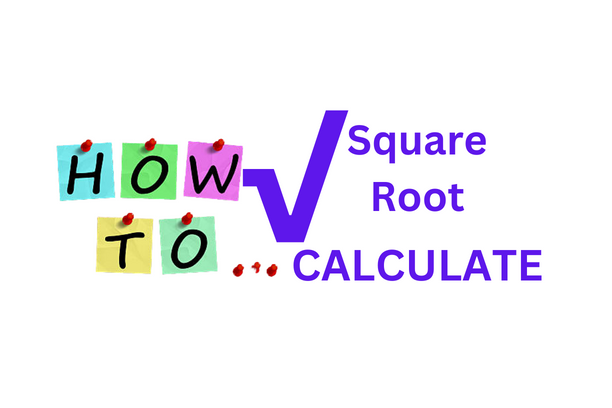How To Calculate Average: Definition, Formula, A Step-by-Step Guide With Examples
How To Calculate Average: Definition, Formula, A Step-by-Step Guide With Examples
Definition: Average is a term used to describe a central value of a set of numerical data. It is a summary measure that represents the typical value of a data set.
Formula: The formula for the average (mean) of a set of n numbers is given by:
mean = (sum of the numbers) / n
where n is the number of values in the data set.
Step-by-Step Guide:
- Determine the set of numbers you want to find the average of.
- Add up all the values in the set.
- Divide the sum of the values by the number of values (n) in the set.
- The result is the average (mean) of the set.
Example: To find the average (mean) of the set of numbers {2, 4, 6, 8, 10}, follow these steps:
- Sum the values: 2 + 4 + 6 + 8 + 10 = 30
- Divide the sum by the number of values (n = 5): 30 / 5 = 6
- The average (mean) of the set is 6.
Average, Median, and Mode Calculator
Average (Mean):
Median:
Mode:
Note: Other types of averages such as the median, mode, and weighted average can be calculated using different methods.
Definition of average in Maths
The average, also known as the mean, is a measure of central tendency that represents the sum of a set of numbers divided by the number of items in the set. It provides a single value that summarizes the entire set of data and gives an indication of where most of the values lie. The formula for average is:
Average = (Sum of numbers) / (Number of items)
How to explain average to a child
The average is a number that tells you what the “middle” or “typical” value is in a set of numbers. To find the average, you add up all the numbers and then divide by the number of numbers. For example, if you have 5 numbers (2, 4, 5, 7, 8), you add them up (2 + 4 + 5 + 7 + 8 = 26) and then divide by 5 (26 / 5 = 5.2). The answer, 5.2, is the average of the set of numbers.
Formula of average
The formula for average (mean) in mathematics is:
Average (mean) = (Sum of numbers) / (Number of items)
Types of averages?
There are several types of averages, including:
- Mean: Also known as the arithmetic mean, it is the most commonly used average. It is found by adding up all the numbers in a set and dividing by the number of items in the set.
- Median: The median is the middle value in a set of numbers. If the set has an odd number of items, the median is the middle item. If the set has an even number of items, the median is the average of the two middle items.
- Mode: The mode is the value that occurs most frequently in a set of numbers. A set may have one mode, more than one mode, or no mode.
- Weighted average: A weighted average gives different weights to different items in a set, depending on their importance. The weighted average is found by multiplying each item by its weight and dividing by the sum of the weights.
| Concept | Definition | Calculation |
|---|---|---|
| Average | A central value of a set of numerical data, can refer to various measures of central tendency (mean, median, mode, etc.) | Depends on the specific measure of central tendency |
| Mean | A specific type of average, also known as the average, that gives a measure of the central value that represents the typical value of the data set | Sum of all values in a data set / number of values |
| Median | The middle value of a set of data, found by arranging the data in order and finding the value that separates the lower and upper half of the data | Arrange the data in order and find the middle value |
| Mode | The most frequently occurring value in a data set | Find the value that occurs most frequently |
| Range | The difference between the highest and lowest value in a data set | Subtract the lowest value from the highest value |
In summary, these concepts are different measures of central tendency and variability used to describe and analyze a set of numerical data.
Average, Median, and Mode Calculator
Average, Median, and Mode Calculator
Average (Mean):
Median:
Mode:
Average symbol in math
The symbol for average (mean) in mathematics is the Greek letter μ (mu). It is also commonly represented by the symbol “x̄” or “Ā”.
What does ∑ mean?
The symbol “∑” is the Greek capital letter sigma and represents the summation operation in mathematics. It is used to denote the sum of a series of terms, usually written as an expression below it. For example, ∑𝑛=1𝑁𝑛 represents the sum of all positive integers from 1 to N. In this expression, N is a given number and the symbol 𝑛 represents a variable that takes on each of the values from 1 to N in turn. The expression ∑𝑛=1𝑁𝑛 is read as “the sum of n from 1 to N”.
What is an average in statistics
In statistics, average refers to a central value of a set of numerical data. The most common type of average is the mean, which is calculated by adding up all the values in a data set and dividing by the number of values. The mean is a measure of the center of the data and is often used to describe the typical value of a set of data. Other types of averages include the median (middle value in a set of data), mode (most frequent value in a set of data), and weighted average (considering the importance of each value in the data set).
Average symbol in physics
In physics, the average symbol is used in various contexts, but most commonly to represent the average value of a physical quantity over a certain interval of time or space. The symbol for average (mean) in physics is often represented by an overbar (e.g. 𝑥̄).
For example, if 𝑥 is a variable representing a physical quantity, the average value of 𝑥 over a certain interval can be represented as 𝑥̄. The calculation of 𝑥̄ is done by dividing the sum of all values of 𝑥 in the interval by the number of values.
Average symbol in excel
In Microsoft Excel, the average symbol for finding the average (mean) of a set of numbers is the equal sign (=) followed by the AVERAGE function. The AVERAGE function in Excel is used to calculate the average (mean) of a range of numbers.
Syntax: =AVERAGE(number1, [number2], …)
where “number1, [number2], …” are the cells or ranges of cells containing the numbers for which you want to find the average.
Example: To find the average (mean) of the numbers in cells A1 to A5, the formula would be:
=AVERAGE(A1:A5)
This formula will return the average (mean) of the values in cells A1 to A5.
Difference Between Average and Mean
The terms “average” and “mean” are often used interchangeably, but they have a slightly different meaning in mathematics.
Average: The term “average” is a general term used to describe the central value of a set of numerical data. It can refer to various measures of central tendency, such as mean, median, mode, etc.
Mean: The mean, also known as the average, is the most commonly used measure of central tendency. It is calculated by adding up all the values in a data set and dividing by the number of values. It gives a measure of the central value that represents the typical value of the data set.
| Concept | Definition | Calculation |
|---|---|---|
| Average | A central value of a set of numerical data, can refer to various measures of central tendency (mean, median, mode, etc.) | Depends on the specific measure of central tendency |
| Mean | A specific type of average, also known as the average, that gives a measure of the central value that represents the typical value of the data set | Sum of all values in a data set / number of values |
In other words, “mean” is a specific type of average. When people talk about the “average” of a set of numbers, they are often referring to the mean.
Here’s a simple table to help illustrate the difference between average and mean:
In summary, while “average” is a general term that can refer to various measures of central tendency, “mean” is a specific type of average that is calculated by adding up all the values in a data set and dividing by the number of values.

